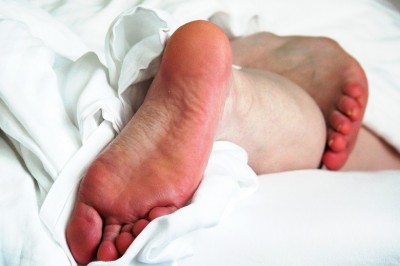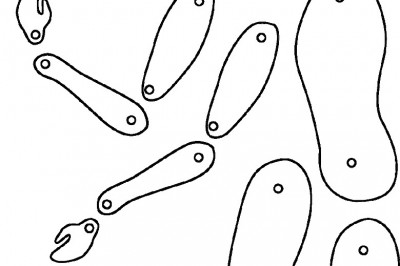What is Bursitis?
Bursitis is the painful inflammation or irritation of the bursa. The bursa is a soft, tiny, fluid-filled sac that covers and cushions the movement between the bones, tendons and muscles near the joints. There are 160 bursae in the body. The major bursae are located adjacent to the tendons near the large joints, such as the shoulders, elbows, hips, and knees.
Healthy bursae create a smooth, almost frictionless functional gliding surface making normal movement painless. When bursitis occurs, however, movement relying upon the inflamed bursa becomes difficult and painful. Additionally, movement of tendons and muscles over the inflamed bursa aggravates its inflammation, perpetuating the problem.
Bursitis usually occurs under the shoulder muscles, at the elbows (called epitrochlear bursitis or "tennis elbow"), the hip sockets (called trochanteric bursitis), heel bones (called retrocalcaneal bursitis) or the kneecaps (called infrapatellar bursitis or "housemaids knee"). It can also occur in the buttocks (called ischiogluteal bursitis) or the thigh (called trochanteric bursitis).
Causes of Bursitis
Bursitis is commonly caused by repetitive movement and excessive pressure. Elbows and knees are the most commonly affected area of the body. Inflammation of the bursae can also cause other inflammatory conditions such as rheumatoid arthritis. On occasions, scoliosis can cause bursitis of the shoulders. Shoulder bursitis is generally caused by overuse of the shoulder joint and related muscles.
Traumatic injury is another cause of bursitis. The inflammation irritates because the bursa no longer fits in the original small area between the bone and the functionary muscle or tendon. When the bone increases pressure upon the bursa, bursitis results.
Symptoms of Bursitis
Bursitis can be either an acute, sudden, sharp pain following an injury, or alternatively a chronic, recurrent inflammation in the same area.
Bursitis symptoms vary from acute local joint pain and stiffness, to burning pain that surrounds the joint around the inflamed bursa. Pain from Bursitis is usually worse during and after activity, and then the bursa and the surrounding joint become stiff the next day in the morning.
When a joint is overused or when it stays under pressure or tension for extended periods of time, nearby bursa can become inflamed. The bursa fills with excess fluid, causing pressure on the surrounding tissue and resulting in bursitis.
The most common examples of Bursitis
* Prepatellar bursitis, commonly know as housemaids knee
* Infrapatellar bursitis, commonly called clergymans knee
* Trochanteric bursitis which gives hip pain
* Olecranon bursitis characterised by pain and swelling in the elbow
* Subacromial bursitis which gives pain in the shoulder
Diagnosis of Bursitis
Bursitis is commonly identified by localized pain or swelling, tenderness, and pain with motion of the tissues in the affected area. X-ray testing can sometime detect calcifications in the bursa when bursitis has been chronic or recurrent.
Why bursa become inflamed?
A bursa can become inflamed from injury, infection (less common in the shoulder), or due to an underlying rheumatic condition. Examples of bursitis include injury as subtle as lifting a bag of groceries into the car inflaming shoulder bursitis, infection of the bursa in front of the knee from a knee scraping on asphalt known as septic prepatellar bursitis, and inflammation of the elbow bursa from gout crystals causing gouty olecranon bursitis.
Treatment of Bursitis
The treatment of any form of bursitis depends on whether or not it involves infection. Bursitis that is not infected (from injury or underlying rheumatic disease) can be treated with ice compresses, rest, and anti-inflammatory medication and pain relief medication.
Occasionally, bursitis will requires aspiration of the bursa fluid. This procedure involves removal of the fluid with a sterile needle and syringe.
Non-infectious bursitis can also be treated with a cortisone injection into the swollen bursa. This is sometimes done at the same time as the aspiration procedure and typically rapidly reduces the inflammation of the swollen bursa.
Bursitis that becomes infected, or septic, requires even assessment by your doctor and aggressive treatment. The fluid can be examined in the laboratory to identify the microbes causing the infection.
Rehabilitation Exercises
The rehabilitative exercises known as Pilates are actually great for people with injuries like Bursitis, particularly in areas such as the knee, neck or shoulders because it can be undertaken without straining the affected area. It is also good for weak muscles and particularly bad posture because it encourages you to strengthen your problem areas in a relaxed and low impact way. Of course, it is advisable that anyone with serious injuries consults their doctor or physio first.
Fiona Eakin has been a Pilates instructor for over 10 years. Fiona has specific Pilates exercise programs to help relieve your knee pain or neck and shoulder pain.























